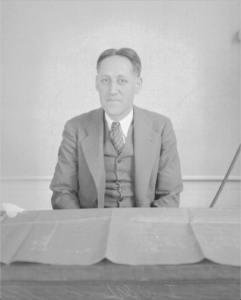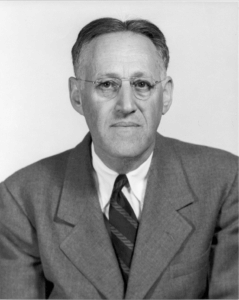This week, we’re highlighting the career of Irving Wolff, a physicist who, in his years at RCA, helped pioneer radar technology.
Dr. Irving Wolff was born on July 6, 1894 in New York. Before becoming a trailblazer in the development and application of radar technology, he earned a B.S. in Physics from Dartmouth College in 1916 and went on also to earn a Ph.D. in Physics from Cornell University in 1923. In addition to his own studies, he taught Physics at Iowa State College in 1919 and also at Cornell University from 1920-1923, later becoming the Heckscher Research Fellow in 1924, the same year he joined RCA. In his tenure at RCA, he played a critical role in developing a use for radio waves on the higher end of the electromagnetic spectrum– microwaves. In the 1930s, RCA developed what they called Radio Vision as a way to find an application for microwaves, but, as he put it later, “In RCA, one might say we had the cart before the horse.”[1] Much of his career, therefore, was dedicated to resolving this reverse research problem.

In 1934, the Army Signal Corps, excited by RCA’s work with microwaves, invited Dr. Wolff and his team to Navesink Light in the New Jersey Atlantic Highlands. There they conducted tests from the top of the lighthouse (around 250 ft above sea level) with the hope of being able to pinpoint the location of ships, and other objects in the New York Bay or on the coast. The tests proved to be rather successful; the transmitter was able to identify a ship passing through the channel in addition to water tanks along the coast line, which also served as good test targets. By 1948, Dr. Wolff’s contributions to the field were properly recognized by the United States Navy, who granted him the highest civilian award, the Distinguished Public Service Award. A Navy spokesman further congratulated Dr. Wolff saying, “Had he been content to do only what was expected of him, the Navy and other Armed Services would have been deprived of equipment that proved invaluable in the successful prosecution of war and increasing the safety of air and sea navigation since the cessation of hostilities.”[2] In effect, his scientific discoveries safeguarded the lives of thousands of US sailors, airmen, and even civilians while simultaneously proving to be disastrous for enemies of the US and her allies.

In 1951 Dr. Wolff was appointed Director of Research for RCA and by 1954 he ascended to the position of Vice President of Research. The research conducted under his leadership certainly was informed by his own interests, both personal and professional. He was an amateur flyer and owned a monoplane, and his interest in flight and airplanes seems to have materialized in the development of high-altitude radar, missile guidance systems, and improved altimeters. Regardless of his advanced degrees, awards, or numerous promotions in RCA, he sustained a deep love and passion for science and laboratory research. Even after being promoted to Vice President he chose to remain in his original office in proximity to his scientists on the lab floor, and in turn, the forefront of scientific investigation.
Text by Ryan Abramowitz, TCNJ ‘21
[1] Irving Wolff, “Radio Vision: The Early Days of Radar,” Radio Age, 3(1948):12.

